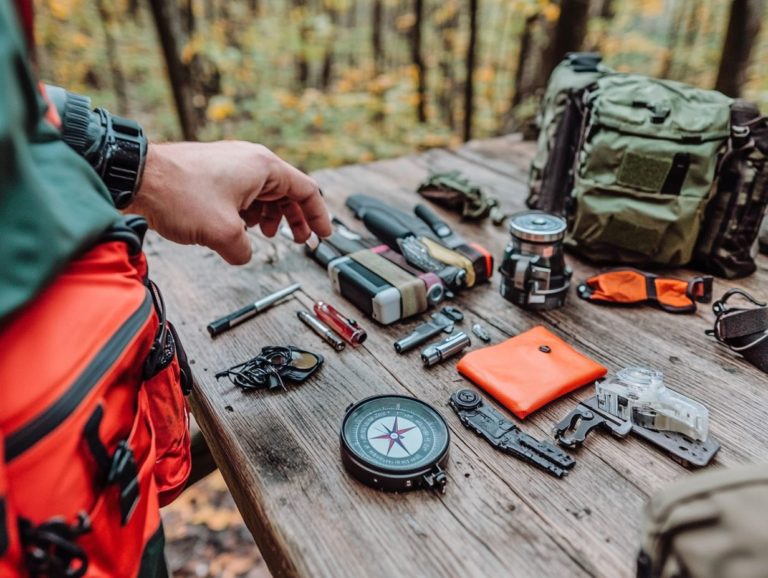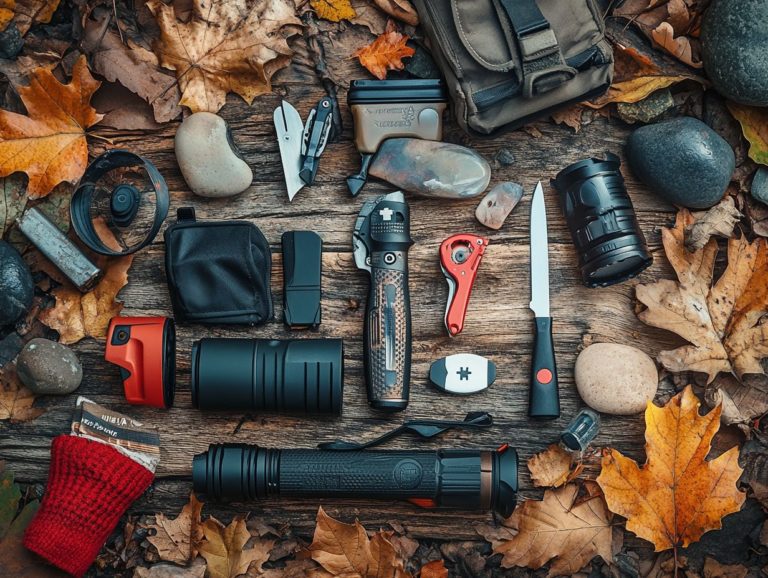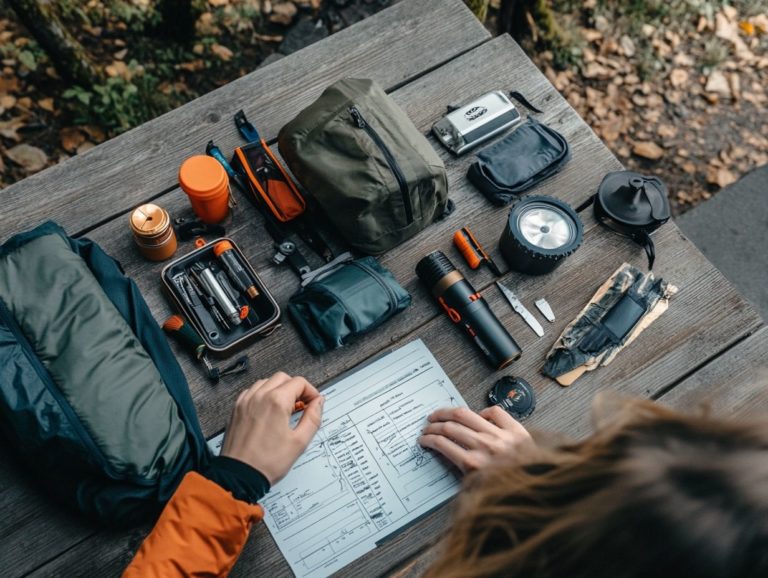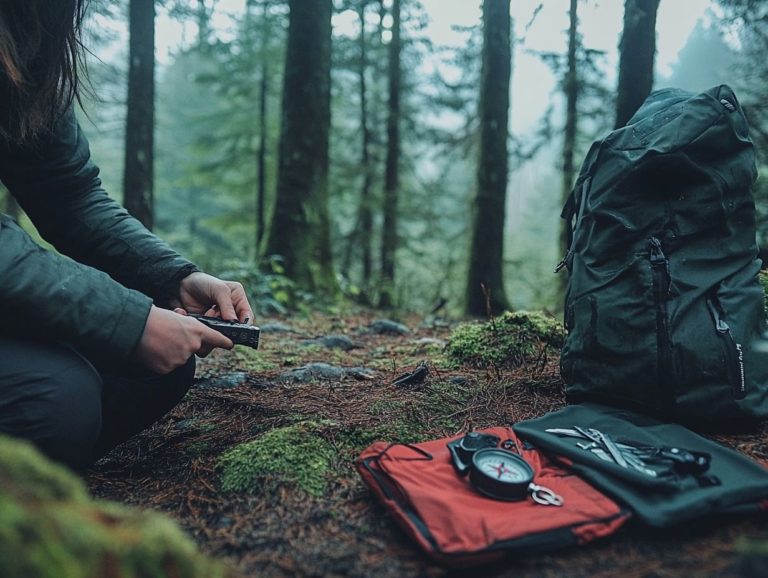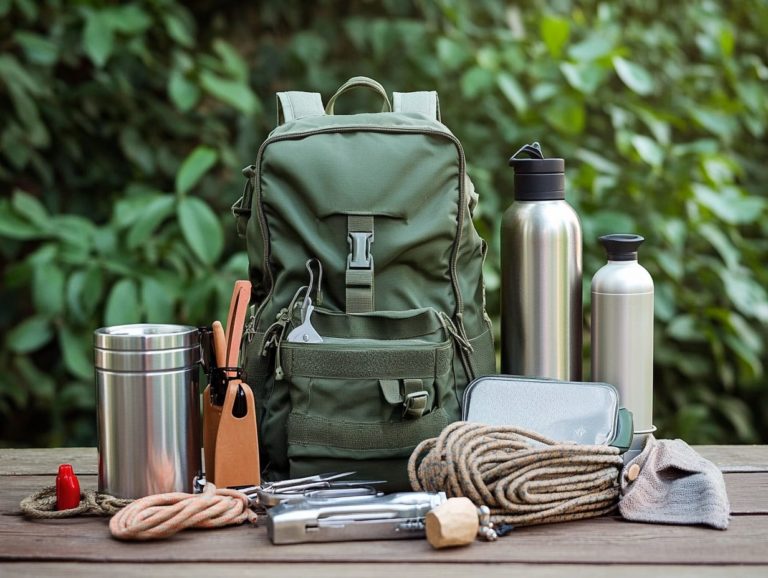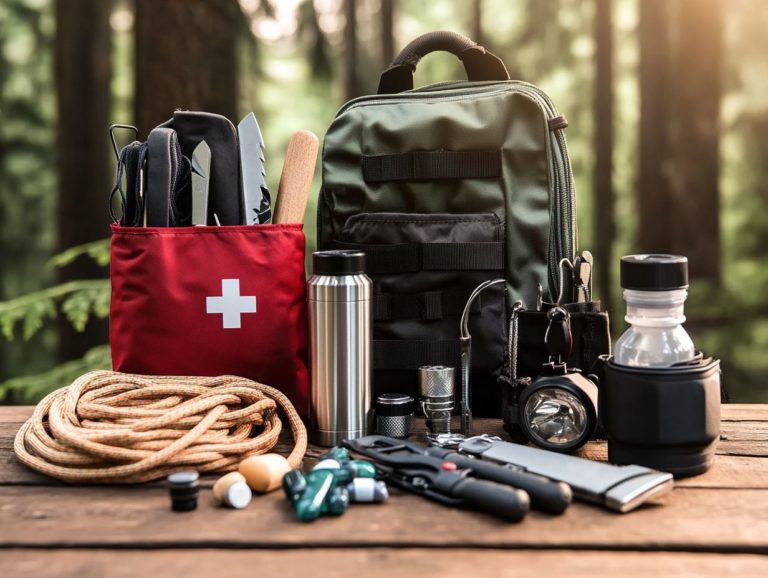How to Use Survival Gear in Emergency Situations
In today s unpredictable world, being prepared for emergencies has never been more essential.
This article delves into the essentials of survival gear, covering the various types and their specific functions, along with must-have items for any emergency kit. You will find practical tips and strategies that will empower you to tackle whatever challenges life throws your way.
Contents
- Key Takeaways:
- Understanding Survival Gear
- Essential Items for Emergency Situations
- Preparing Your Survival Gear
- Using Your Survival Gear in Different Scenarios
- Training and Practice for Effective Use of Survival Gear
- Smart Strategies for Using Your Survival Gear
- Frequently Asked Questions
- 1. What is considered survival gear in emergency situations?
- 2. How do I know which survival gear to pack for an emergency?
- 3. Can I use regular camping gear as survival gear in an emergency?
- 4. How do I properly use a fire starter in an emergency?
- 5. What is the most important survival gear to have in an emergency?
- 6. How can I learn how to properly use my survival gear in an emergency?
Key Takeaways:
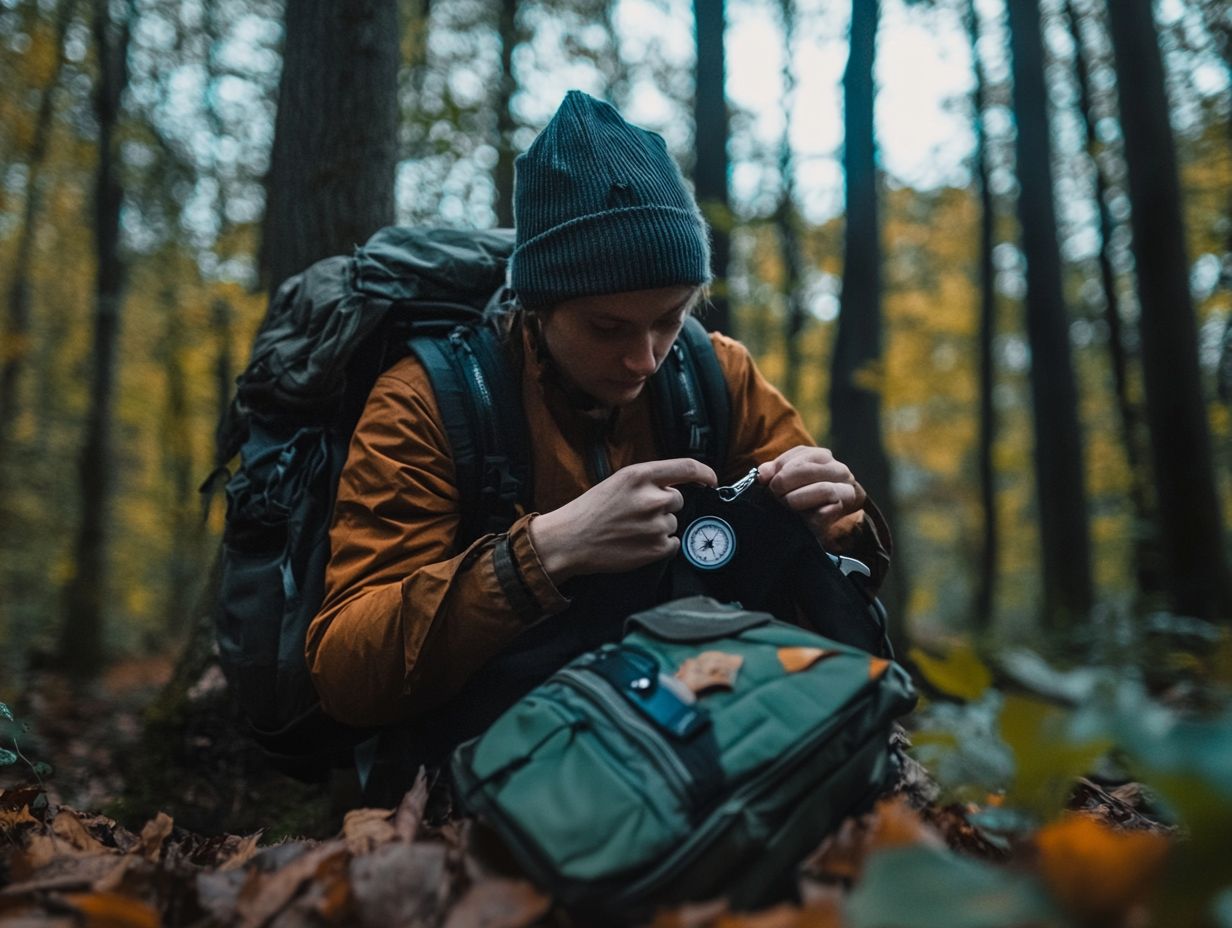
- Know your gear – familiarize yourself with different types of survival gear and their functions to be better prepared in emergency situations.
- Keep essential items in your survival gear kit, such as first aid supplies and shelter materials, to increase your chances of survival.
- Proper maintenance and storage of your gear are crucial in ensuring its reliability when needed the most. Regularly check and restock your kit.
Understanding Survival Gear
Grasping the essentials of survival gear is vital for your safety and readiness when faced with unforeseen emergencies and natural disasters. Whether you’re crafting a family emergency plan or assembling a personal preparedness kit, having the right supplies can really help in tough times.
Survival gear extends beyond basic supplies such as clean water and non-perishable food, it also includes specialized items designed for specific scenarios, like hurricanes or floods, as highlighted by esteemed organizations like the Mayo Clinic and FEMA.
Being prepared can make a big difference when it matters most.
Types of Gear and Their Functions
You will want to have several types of gear on hand for emergencies, each one playing a unique role in ensuring your overall safety. For instance, a first-aid kit is essential for addressing medical needs, while a battery-powered radio a radio that works on batteries keeps you updated on weather alerts and local conditions. This is crucial in areas like Florida or Arizona, where natural disasters can strike unexpectedly.
Understanding how to navigate various emergency scenarios is vital, which makes tools that can do many jobs invaluable. They empower you to tackle tasks from building a shelter to preparing food. When clean drinking water is hard to come by, portable water filters become essential, especially after natural calamities. Additionally, knowing what to include in your survival gear kit can further enhance your preparedness.
If you find yourself facing extreme weather, thermal blankets are a must to help maintain your body heat and protect you from hypothermia during sudden cold snaps. And don t overlook food supplies energy bars and freeze-dried meals can keep you sustained when regular provisions are unavailable.
Having a well-rounded selection of these items could mean the difference between safety and peril in a crisis.
Essential Items for Emergency Situations
Essential items for emergency situations are crucial for ensuring your family’s safety and preparedness for unforeseen circumstances. A well-prepared emergency kit should include:
- non-perishable food
- clean water
- a first-aid kit
- essential medications, including prescription medications
- sanitation supplies to meet personal hygiene needs during a disaster
These items are important during a disaster, much like those faced during Hurricane Katrina or other natural disasters emphasized by the American Red Cross. Remember to regularly check and replenish your emergency kit.
Get your emergency kit ready! You never know when you ll need it.
Must-Have Gear for Survival
Equipping yourself with essential gear for survival can significantly enhance your preparedness and resilience during emergencies. Must-have survival supplies include items like thermal blankets, extra batteries, and communication plans that keep your family informed and safe during a power outage or evacuation.
Incorporating a durable multi-tool, a versatile tool that combines several functions, can be invaluable for a variety of tasks, from making repairs to food preparation. Emergency water purification tablets are also crucial, ensuring you have access to safe drinking water in a crisis. Additionally, understanding different types of survival gear can help you prioritize a first-aid kit, which is essential and should contain necessary medical supplies to address minor injuries or ailments that may arise when professional assistance is unavailable.
Having flashlights with extra batteries will light up dark surroundings, while a portable charger keeps your communication devices functional. Each component of your survival kit plays a critical role in maintaining safety and enhancing your chances of navigating through unexpected situations.
Preparing Your Survival Gear
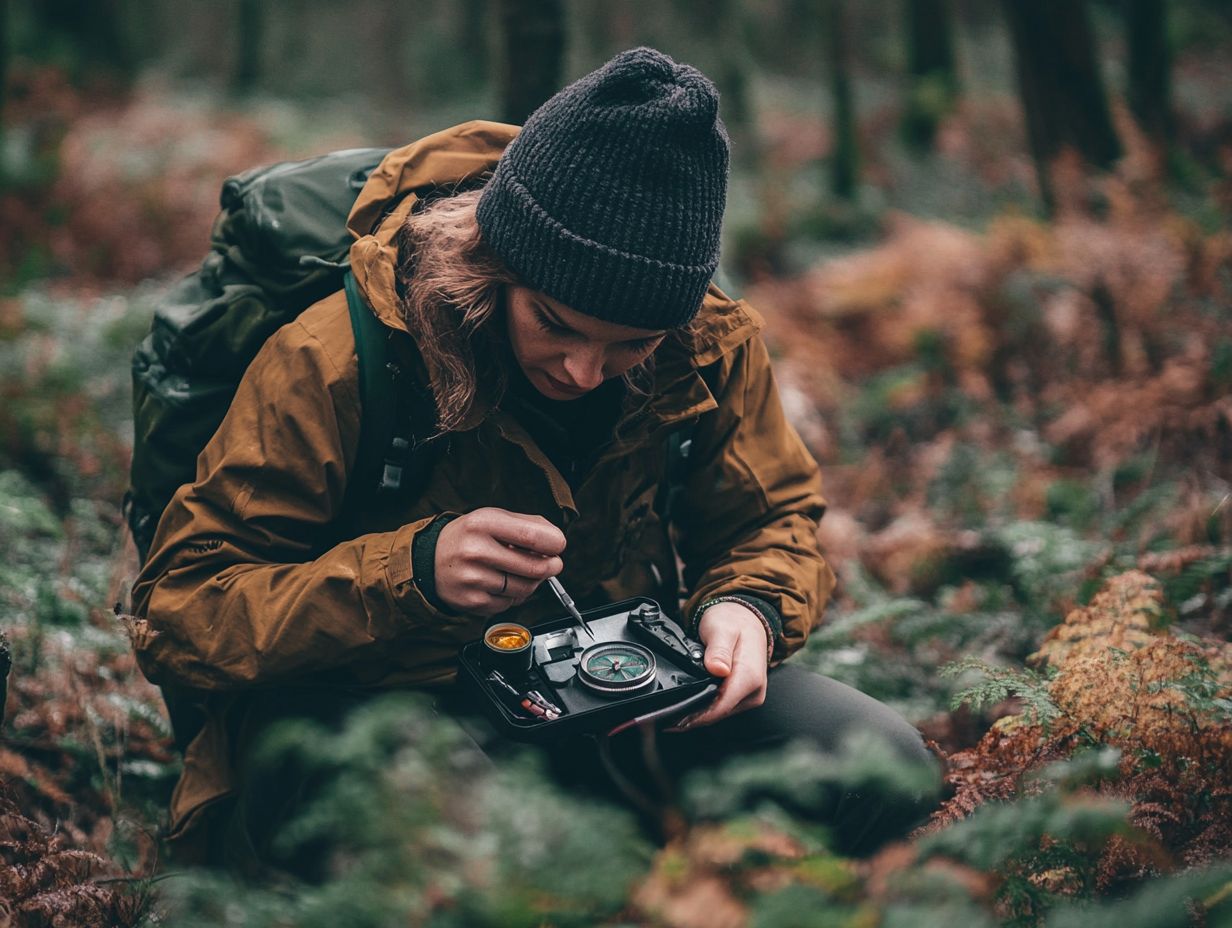
Preparing your survival gear with precision demands a keen understanding of kit maintenance and the unique needs of your family across different emergency scenarios. By regularly reviewing and updating your preparedness kit, you can ensure that all essential items remain in optimal condition and are tailored to your current circumstances.
Local threats, like hurricanes in Florida or wildfires in Arizona, require special attention.
Your emergency survival kit needs proper maintenance and storage to ensure it’s ready when you need it! Organize durable supplies, like food and hygiene items, and make sure that all your equipment think flashlights and multi-use tools is in optimal working condition.
Start by using clear, labeled bins for your supplies. This helps you find what you need during high-stress moments. Regularly check the expiration dates on food and sanitation products, replacing them as necessary to keep everything functional. Store your gear in a cool, dry place to prevent any wear and tear.
Utilizing vacuum-sealed bags for perishables and first aid items can help maximize space while safeguarding these essentials from moisture. For those interested in being prepared, having the right survival gear for urban environments is crucial. Organizing your gear like this prepares you mentally for emergencies.
Using Your Survival Gear in Different Scenarios
Understanding how to effectively utilize your survival gear in a variety of scenarios is crucial for maximizing its benefits during emergencies. Whether you find yourself in the midst of a natural disaster, a wilderness survival situation, or an urban emergency, tailoring your approach to fit each specific context can greatly elevate your safety and preparedness.
Surviving in the Wilderness
Surviving in the wilderness presents unique challenges that demand specific essential items and skills for your safety and sustenance. You need to know how to gather clean water, build a shelter, and effectively utilize survival supplies like thermal blankets and food storage to endure extended periods in remote areas.
Beyond these fundamentals, mastering navigation using natural markers and creating signals for rescuers can significantly boost your chances of survival. Adopting strategies such as foraging for edible plants and learning how to start a fire will provide you with warmth and a means to cook food. Additionally, equipping yourself with the top survival tools for emergency preparedness can enhance your readiness for any situation.
Every wilderness excursion should include packing a reliable multi-tool, a first aid kit, and a sturdy rope; these are essential for addressing your personal needs and ensuring safety. By prioritizing these key aspects, you can confidently tackle the unpredictable elements of the wild, transforming potential challenges into an empowering experience. Additionally, consider the top features to look for in survival gear to enhance your preparedness.
Surviving Natural Disasters
Surviving natural disasters requires a thorough grasp of emergency preparedness and the strategic use of survival gear. Craft an emergency plan, engage in community preparedness initiatives, and conduct regular emergency drills to elevate your family’s readiness for events like Hurricane Katrina or other localized disasters.
These essential components not only equip individuals with vital knowledge but also cultivate a culture of resilience within communities. Maintain a well-stocked emergency kit that includes:
- Food
- Water
- First-aid supplies
Evacuation plans should be clear and practiced, enabling families to swiftly and safely relocate if the need arises. Participate in local preparedness workshops to fortify community ties and gain valuable insights on how neighbors can support each other during crises.
By prioritizing these factors, you and your community can collaborate effectively to mitigate risks and respond adeptly when threats emerge.
Surviving in Urban Environments
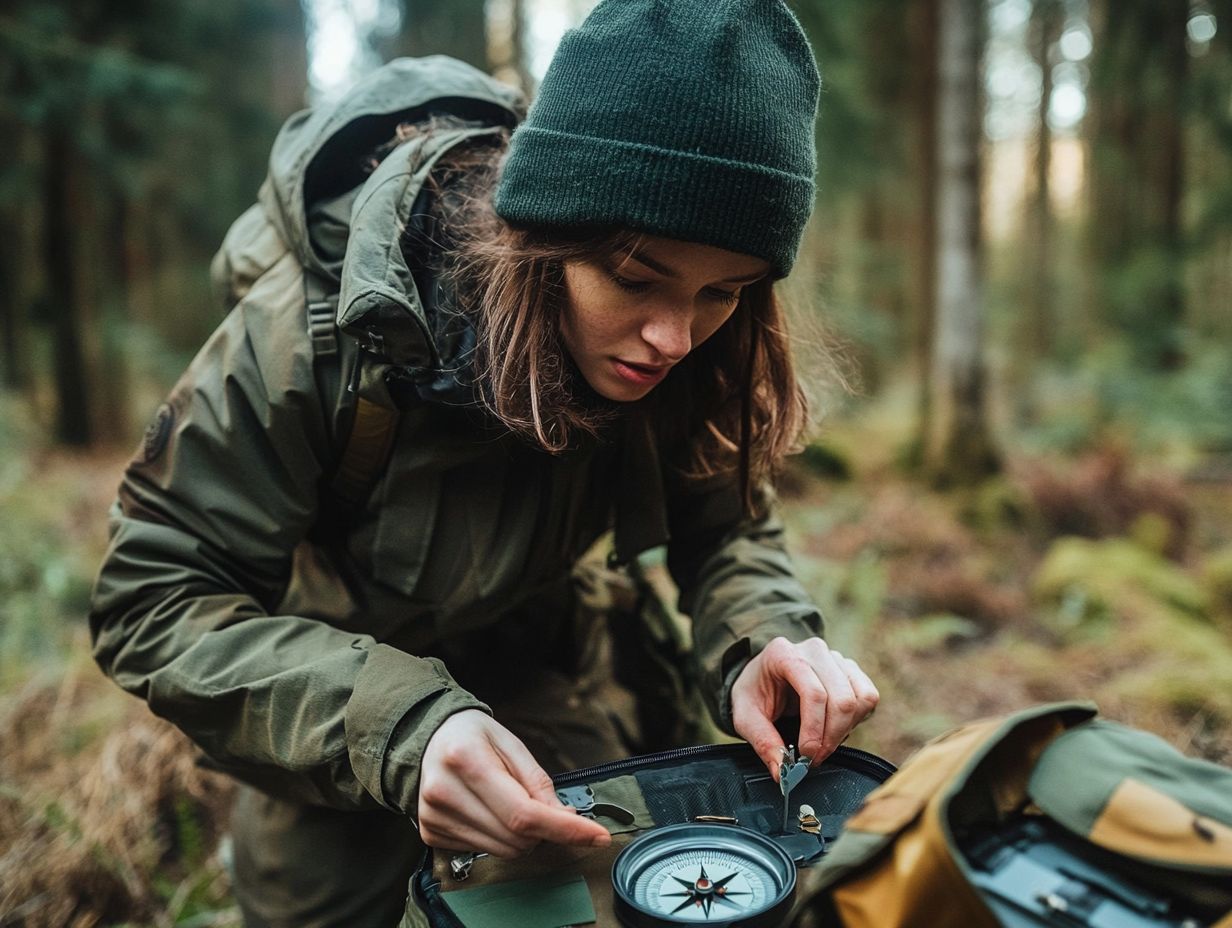
Surviving in urban environments during emergencies presents unique challenges that demand specific strategies and resources. Access to emergency funds, effective communication plans, and essential supplies like flashlights and battery-powered radios can make all the difference when seconds count!
In densely populated areas, the urgency of a situation can escalate rapidly, often worsened by limited escape routes and increased risks of civil unrest. As you navigate these urban landscapes, prioritize awareness of your surroundings and know the locations of safe zones for vital refuge points.
Carry items such as portable water filtration devices, compact first-aid kits, and multi-tools to enhance your self-sufficiency during critical moments. It’s also essential to understand the importance of survival gear in ensuring your safety. Establish a reliable system for checking in with loved ones to boost your confidence and foster a sense of community resilience in turbulent times.
Training and Practice for Effective Use of Survival Gear
Training and practice in the effective use of survival gear are essential elements of thorough emergency preparedness. Engage in regular training sessions, including emergency drills for your family and community, so everyone becomes familiar with vital items and their functionalities.
Being familiar with your gear means you ll be ready to act quickly when it counts!
Simulation and Real-Life Drills
Simulation and real-life drills offer invaluable opportunities to practice emergency response tactics and become familiar with survival gear. By conducting regular drills, ensure that every family member understands evacuation plans and can respond effectively across various emergency scenarios, significantly enhancing your overall safety preparation.
These practical exercises empower you to build confidence and develop the ability to perform tasks without thinking about them because you’ve practiced essential during high-stress situations.
Engage in diverse scenarios, such as fire evacuations, natural disasters, or medical emergencies, to pinpoint weaknesses in your strategies and make necessary adjustments. These exercises also foster teamwork, as families or organizations learn to communicate clearly and coordinate their actions under pressure.
Ultimately, consistent practice hones your skills and instills a sense of readiness that is crucial for navigating unpredictable circumstances with confidence and poise.
Smart Strategies for Using Your Survival Gear
Smart strategies for utilizing survival gear can significantly elevate your preparedness, ensuring you are fully equipped to manage emergencies with confidence.
By grasping the dos and don’ts of survival gear management like keeping your equipment in prime condition and consistently updating your emergency essentials you can sidestep common pitfalls that might arise in high-stress situations.
Dos and Don’ts in Emergency Situations
Understanding the dos and don’ts in emergency situations is crucial. Keeping essential items accessible while staying calm plays a significant role in your family’s safety.
Having a well-stocked emergency kit can make the difference between chaos and control. It s wise to regularly check and update your supplies, including water, non-perishable food, and first-aid items, to ensure everything is ready when you need it most.
Avoid hoarding unnecessary items that clutter your emergency space. Practicing drills improves your family’s readiness, ensuring everyone knows the escape routes and designated rally points.
Staying informed through reliable sources about potential threats gives you the power to make informed decisions under stress. This highlights just how essential it is to be thoroughly prepared.
Frequently Asked Questions
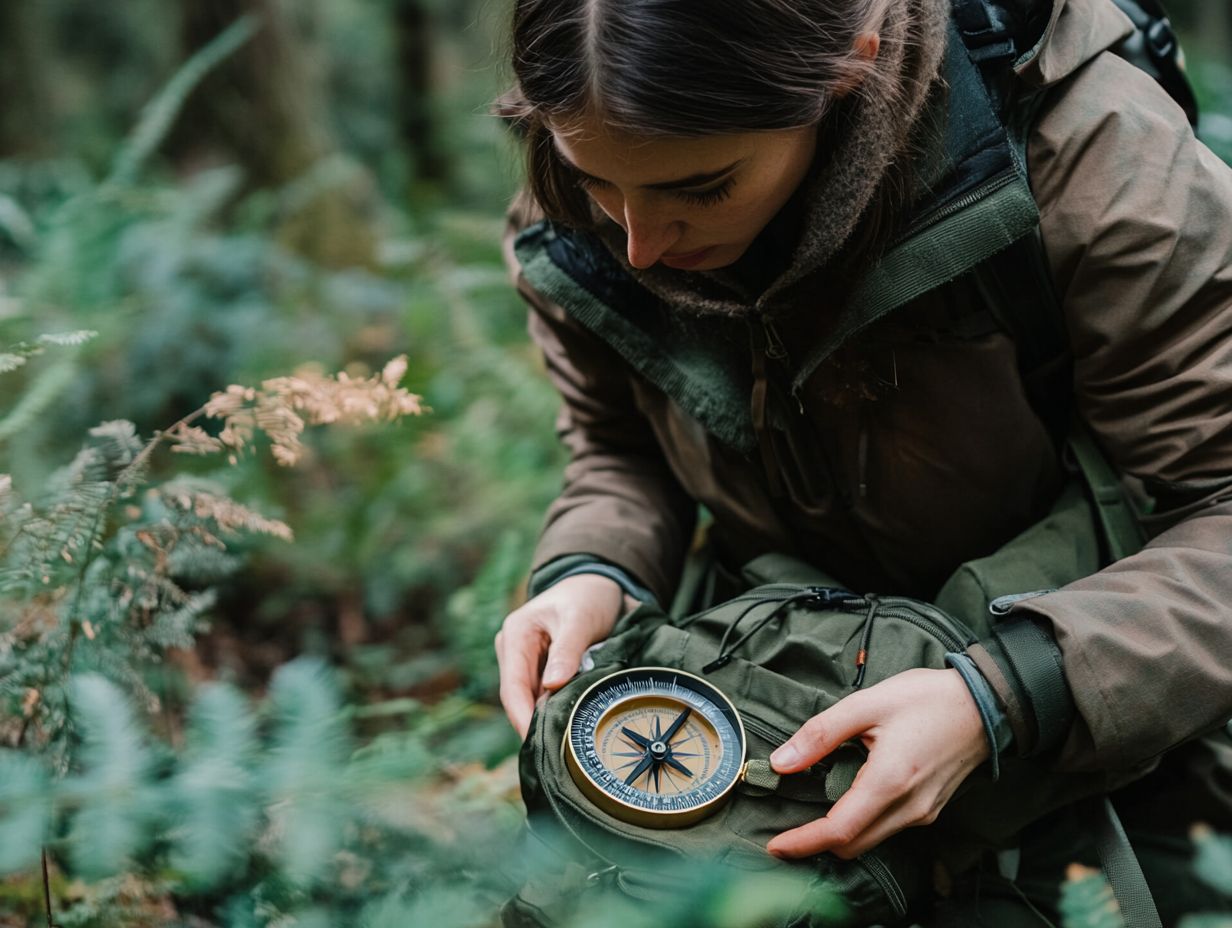
1. What is considered survival gear in emergency situations?
Survival gear includes tools and supplies that help you survive in emergencies. This can include items such as a first aid kit, water filter, fire starter, compass, and shelter.
2. How do I know which survival gear to pack for an emergency?
The type of survival gear you should pack depends on the potential emergency situations you may encounter and your personal needs. Research the area you will be visiting and create a customized emergency kit based on your specific needs.
3. Can I use regular camping gear as survival gear in an emergency?
Some camping gear can be used as survival gear in emergency situations. However, survival gear is specifically designed to be more durable for unexpected and extreme circumstances. Always have dedicated survival gear to stay safe!
4. How do I properly use a fire starter in an emergency?
To use a fire starter, gather dry materials such as leaves, newspaper, or small sticks to create a small nest. Use the fire starter according to its instructions, and once the flame has started, carefully place it in the center of the nest. Gradually add larger sticks and logs to build a fire.
5. What is the most important survival gear to have in an emergency?
A first aid kit is your lifesaver in emergencies! Injuries can happen in any emergency situation, so it s crucial to have the necessary supplies to treat them. Along with a first aid kit, a water filter and shelter are also essential for survival.
6. How can I learn how to properly use my survival gear in an emergency?
Familiarize yourself with your survival gear before an emergency occurs. Take the time to read instruction manuals, watch tutorials, and even attend classes or workshops on survival skills. Practice using your gear in a controlled setting to ensure you are prepared in case of an emergency.

